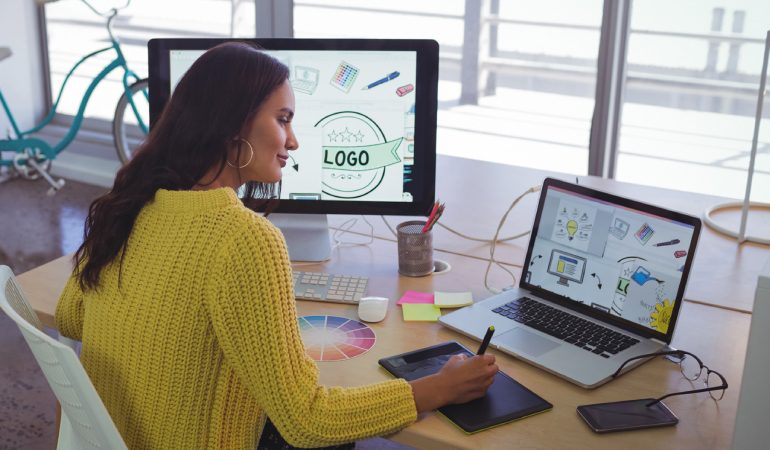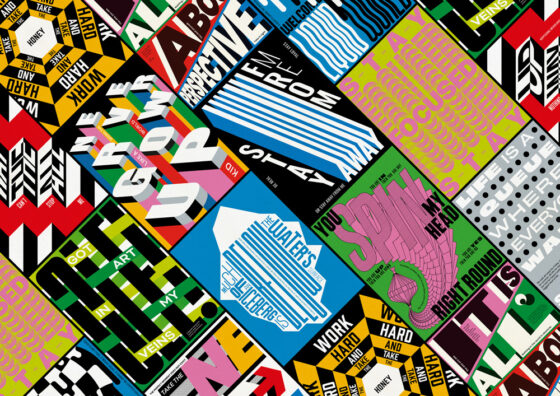Hiring a senior graphic designer for your core team is a crucial process. You need to be thorough to make sure the candidate not only fits your technical requirements but also aligns with your company’s culture and values. I always recommend that my clients follow the same interview process they have for their internal core team members with remote candidates if they’re planning to hire them as core team members as well.
It’s a huge mistake when companies are looking for a full-time, long-term team player but, because the candidate is based outside the U.S., they follow a shorter interview process that they usually use for freelancers or part-time contractors. The result is missing out on important details like cultural fit and alignment with company values.
So, if you have your interview process in place, stick to it. If you don’t, feel free to use Globy’s tried-and-tested process for graphic designers:
1. Portfolio Review
Initial Screening: Before scheduling any interviews, request the candidate’s portfolio. This step is crucial in assessing their design capabilities and experience.
Market Focus: Ensure the portfolio includes projects aimed at the U.S. market and presented in English. This helps confirm their familiarity with the market’s standards and expectations. If a candidate cannot provide U.S./English-based projects, it usually indicates a lack of necessary experience, and it might be prudent not to proceed further.
2. Initial Qualification Call (15-30 minutes)
Communication Skills: This call primarily assesses the candidate’s communication and English proficiency. A significant portion of candidates may be filtered out in this stage based on their ability to articulate and understand nuances during the conversation.
Skill and Experience Verification: Ask targeted qualification questions to validate the candidate’s skills and experiences relevant to the role. Example questions include:
- Can you describe your experience with U.S.-based clients?
- How do you approach a new design project from concept to completion?
- What design tools are you most proficient in, and why?
- Describe a challenging design problem you encountered and how you solved it.
3. Skills Validation Call (Up to 1 hour)
Deep Dive into Technical Skills: This interview involves more in-depth discussions about the candidate’s specific skills and past project experiences. It’s an opportunity to gauge their problem-solving abilities and creativity in design.
4. Practical Assignment
Real-world Application: Give a small, time-bound home assignment relevant to your business needs. This ensures the candidate not only talks the talk but can also deliver actual work that meets your standards.
Assessment: Evaluate the assignment based on creativity, adherence to the brief, and execution quality. This step is crucial in understanding the candidate’s practical skills and alignment with your company’s design philosophy.
5. Cultural Fit Interview (30 minutes)
Alignment with Company Values: This final step involves a discussion focused on understanding the candidate’s personal values, work ethic, and potential to integrate well with your team.
Address Any Concerns: Use this opportunity to clarify any doubts or concerns that arose during the previous stages.
6. Additional Checks
Reference Checks: Always request references and conduct background checks to validate the candidate’s professional history and reputation.
Continuous Calibration: Based on the outcomes and learnings from each interview round, refine your interview questions and process to better target the ideal candidate profile.
This structured interview process is designed to ensure that by the time a candidate reaches the final stages, they have been thoroughly vetted not just for their technical abilities but also for their potential to be a long-term fit within your company.
Applying the same rigorous standards to remote hires as you would for local team members is essential for building a cohesive and productive team. This methodical approach helps mitigate risks and increases the likelihood of a successful hire, safeguarding your investment in new team members.
Portfolio Quality
When hiring senior graphic designers from Latin America, understanding the quality of portfolios and recognizing regional design styles can significantly enhance your ability to identify top talent.
1. Presentation
Language and Market Focus: The portfolio should be primarily in English with projects targeted at U.S. or international markets.
Clear Narrative: Look for portfolios that tell a story, clearly outlining project objectives, challenges, and the designer’s role in achieving results.
2. Content Diversity
Variety of Work: Ensure a mix of different project types, such as branding, web design, print materials, and motion graphics.
Depth in Specialization: If the designer specializes in a particular field like UI/UX or branding, expect a more comprehensive showcase in that area.
3. Technical Excellence
Execution Quality: Assess the quality of designs, from typography and color selection to layout and overall composition.
Tool Mastery: Check for proficiency in relevant design tools like Photoshop, Illustrator, Figma, and others.
4. Conceptual Strength
Creative Ideation: Does the portfolio showcase innovative thinking and unique visual solutions?
Problem-solving Skills: How well does the designer tackle design challenges, and are there examples of how they improved outcomes?
5. Case Studies and Success Metrics
Results-Oriented: Look for case studies that highlight tangible results, such as increased user engagement, brand recognition, or sales.
Client Feedback: Positive client testimonials add credibility to the designer’s capabilities.
At Globy I always make sure to include Senior Graphic Designers with detailed portfolios and even short videos from interviews, ensuring we align perfectly with the client’s expectations. In many cases, clients are able to hire someone from these initial calibration candidates.
Learn more about our approach to finding and vetting senior graphic designers here.


